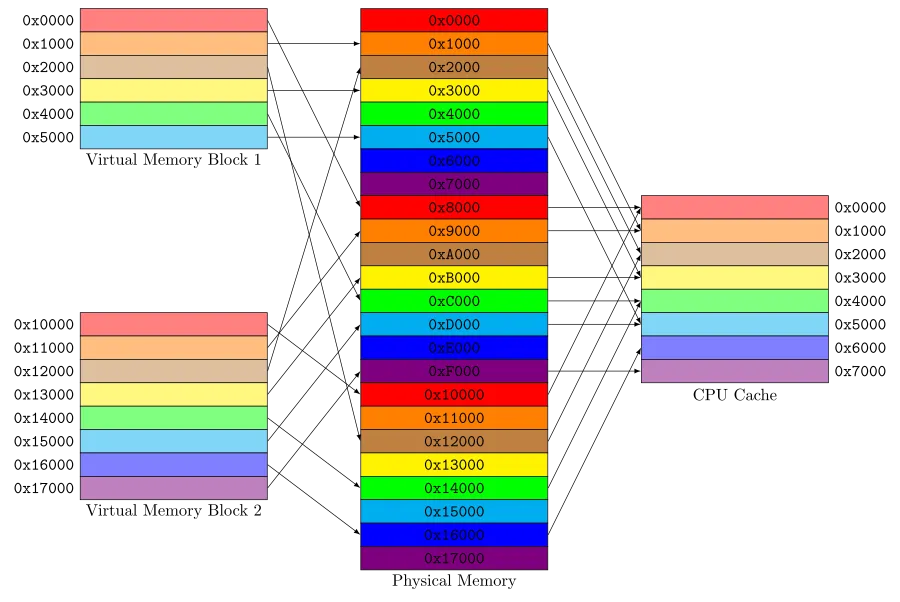Locality is a universal behavior that computational processes tend to refer repeatedly to subsets of their resources over extended time intervals.
Temporal locality means that references to the same objects are grouped in time, and spatial locality means that objects close to each other tend to be referenced together.
Models of Locality
Static Representation
Objects could be ordered so that their probabilities of use follow the relation
And they often follow a Zipf Law, which means that
There is no differentiation into phases in this model. So empirically this model overestimates the average locality size by factors of 2 or 3.
Phase-transition
Execution of a computation consists of a series of phases; phase
Thus, the history of the computation appears as a sequence,
In each phase state, the model uses a static representation above for the locality set.
Working Set
The working set model defines
A distance function gives a single measure of temporal and spatial locality.
It is usually possible to choose the window size
Locality Principle in Locality Model
- Computational processes pass through a sequence of phases.
- The locality sets of phases can be inferred by applying a distance function to a program’s address trace observed during a backward window.
- Memory management is optimal when it guarantees each program that its locality sets will be present in high-speed memory.
Modern Models of Locality: Context Awareness
Context awareness embraces four key ideas:
| Modern Model | Original Model |
|---|---|
| Observer | the execution point of the computational process |
| Neighborhood | the current locality set |
| Inference | the distance function |
| Optimal Action | to guarantee that the current locality is present in a processor’s cache |
An observer
The observer is the agent who is trying to accomplish tasks with the help of software, and who places expectations on its function and performance. In most cases, the observer is the user who interacts with software. In some cases, such as a program that computes a mathematical model, the observer can be built into the software itself.
Neighborhoods
One or more sets of objects that are most relevant to the observer by some metric at any given time.
Inference
A method of identifying the most relevant objects by monitoring the observer’s actions and interactions and other information about the observer contained in the environment.
Inference can be any reasonable method that measures the content of neighborhoods.
Optimal actions
An expectation that the observer will complete work in the shortest time if neighborhood objects are ready accessible in nearby caches.
Optimal actions are performed by the software on behalf of the observer. These actions can come either from inside the software with which the observer is interacting, or from outside that software, in the run-time system.
An Optimal Actions Example: Cache Coloring
Cache coloring (also known as page coloring) attempts to allocate free pages that are contiguous from the CPU cache’s point of view, in order to maximize the total number of pages cached by the processor.
A physically indexed CPU cache is designed such that addresses in adjacent physical memory blocks take different cache lines in the cache. But virtually adjacent memory blocks could potentially take the same position in the cache.

Coloring solves this problem by selecting pages that do not contend with neighbor pages. Physical memory pages are colored so that pages with different colors have different positions in CPU cache memory. When allocating sequential pages in virtual memory for processes, the kernel collects pages with different colors and maps them to the virtual memory. In this way, sequential pages in virtual memory do not contend for the same cache line.